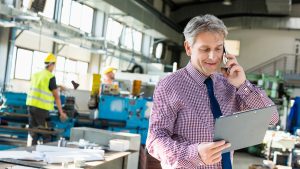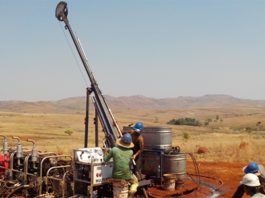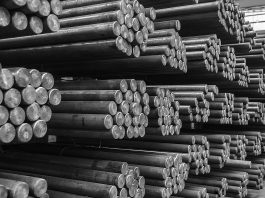Just how vital the steel industry is cannot be understated. ResponsibleSteel is working to make sure it fits in with a sustainable future.
The steel industry is vital to all sectors, and yet it remains a heavy carbon-producing industry.
Assistant Editor Matt Brundrett talks with Savannah Hayes, Communications Manager at ResponsibleSteel, to find out more about the work going into changing this.
What is the goal of ResponsibleSteel?
Steel contributes around 10% of the greenhouse gas emissions from the world’s energy system – from the extraction of raw materials to the production of steel products. We urgently need to drive down these emissions if we are to remain in line with the Paris Agreement. But we need to do so in a manner that works for people and the environment, too. That is why ResponsibleSteel’s mission is to be a driving force in the responsible production of net-zero steel across the world.
ResponsibleSteel offers steelmakers a unique and valuable roadmap to improvement and a common language of assessment that their customers, communities, investors, and workforce can all get behind. When a site becomes certified against the ResponsibleSteel International Production Standard, it has undergone a robust assurance process with independent auditors assessing not only how it is working to reduce emissions but also how it is managing its impacts on the local environment and communities, how it treats its workforce, and how it drives improvements in its operations and in its supply chain. We have already certified over 80 sites globally, and we’re just getting started.
What is the current state of the steel industry?
The steel industry is in a state of flux. More and more, the industry is looking to new methods and technologies to enable more sustainable, low-emissions steelmaking. Naturally, steelmakers are looking to scrap to reduce their emissions, and this already contributes to around a third of today’s emissions reductions. But scrap can only take the industry so far. We do not have sufficient scrap supplies to meet demand and will not until the second half of this century. To avoid a commercial ‘race for scrap’ with no net gain for the climate, we need to ensure we are maximising the use of scrap while also incentivising the decarbonisation of primary steel production from iron ore since that is where the lion’s share of emissions are made.
This will require a huge investment in alternative technologies, such as Carbon Capture and Storage and access to green hydrogen, renewable electricity, and potentially biogas, to phase out coal. Steelmakers need the financing to implement these and other high-cost solutions. They are starting to see signals from customers demonstrating that they are prepared to pay the premium on lower-emissions steel. Still, at present, this is being marketed as ‘green’ without a credible, holistic standards framework. That is where ResponsibleSteel comes in.
What does a green steel industry look like?
The first thing I’d say is that the question is misplaced. We want a responsible steel industry, not just a green one. What about the impacts the steel value chain has on biodiversity or water resources? What about the safety and health of the six million people who make up the industry and their families, too? So, what does a responsible steel industry look like? That’s precisely the question ResponsibleSteel set out to answer eight years ago by developing its consensus-driven International Standard with both the industry and civil society. And we have ended up with one that has 13 principles to cover all these aspects.

Most people think of ‘green steel’ as being about climate change. When it comes to carbon emissions, there are different shades of green since the industry won’t get to zero overnight. So how low is good? Everyone has their own thoughts on this, and opinions differ depending on your commercial and geographical perspective, which is why we need a credible, consistent, global approach that really will deliver a green steel industry instead of a few million tonnes of ‘low emissions steel’ here and there. That is what the ResponsibleSteel International Production Standard offers, enabling decision-makers to benchmark the embodied emissions of all steel in the world on a like-for-like basis. Our audit and labelling scheme rewards four different levels of decarbonisation progress towards near zero, and it serves as a global framework against which ‘green steel’ claims can be assessed.
What are the key challenges currently preventing this from happening? What should be done to overcome them? What is ResponsibleSteel doing?
To accelerate the production of near-zero steel, we need financing, policy shifts, and clear demand signals. We run a Finance Working Group to enable the finance sector and the steel industry to come together to discuss how to overcome barriers to capital for decarbonisation. We are also working with our partners to drive demand for near-zero steel through initiatives like SteelZero and the First Movers Coalition’s Near-Zero Steel 2030 Challenge.
Furthermore, amidst an increasing number of emerging initiatives looking for new ways to define near-zero steel, it is imperative that we drive alignment on common definitions and measurement methods to prevent the fragmentation of global trade and to enable effective markets in low-emissions steel. Our work here has led to the launch of the Steel Standards Principles alongside the World Trade Organization at COP28. The principles establish the key foundations of a common framework for climate-related steel standards, including transparent governance, multistakeholder participation, and effectiveness in driving the decarbonisation of the industry globally. Already, over 40 key steel producers, industry associations, standard-setting bodies, international organisations and initiatives have endorsed the principles. And this is only the first step. The true value of the Steel Standards Principles lies in the next ones: co-operation and collaboration between standard setters to smooth out differences in measurement methods and drive consensus on definitions.
What are ResponsibleSteel’s plans for the future? Are there any developments, agreements, etc., that ResponsibleSteel is active in or looking forward to?
ResponsibleSteel is just getting started. We are rolling out our International Production Standard across sites globally – over 80 to date – and following a 12-month test phase of these requirements; we are preparing for the first certified steel. In time, sites will be selling ResponsibleSteel-certified steel that demonstrates progress towards near-zero using an international barometer. We recently updated our requirements for responsible sourcing of input materials and our decarbonisation progress thresholds to ensure our standard incentivises the use of scrap within the bounds of its availability and drives down steel emissions globally.
Later this year, we will launch a new Downstream Chain of Custody Standard, which will be critical in ensuring that users of certified steel make specific, reliable, and, therefore, credible claims in the market.
Please note, this article will also appear in the 18th edition of our quarterly publication.









